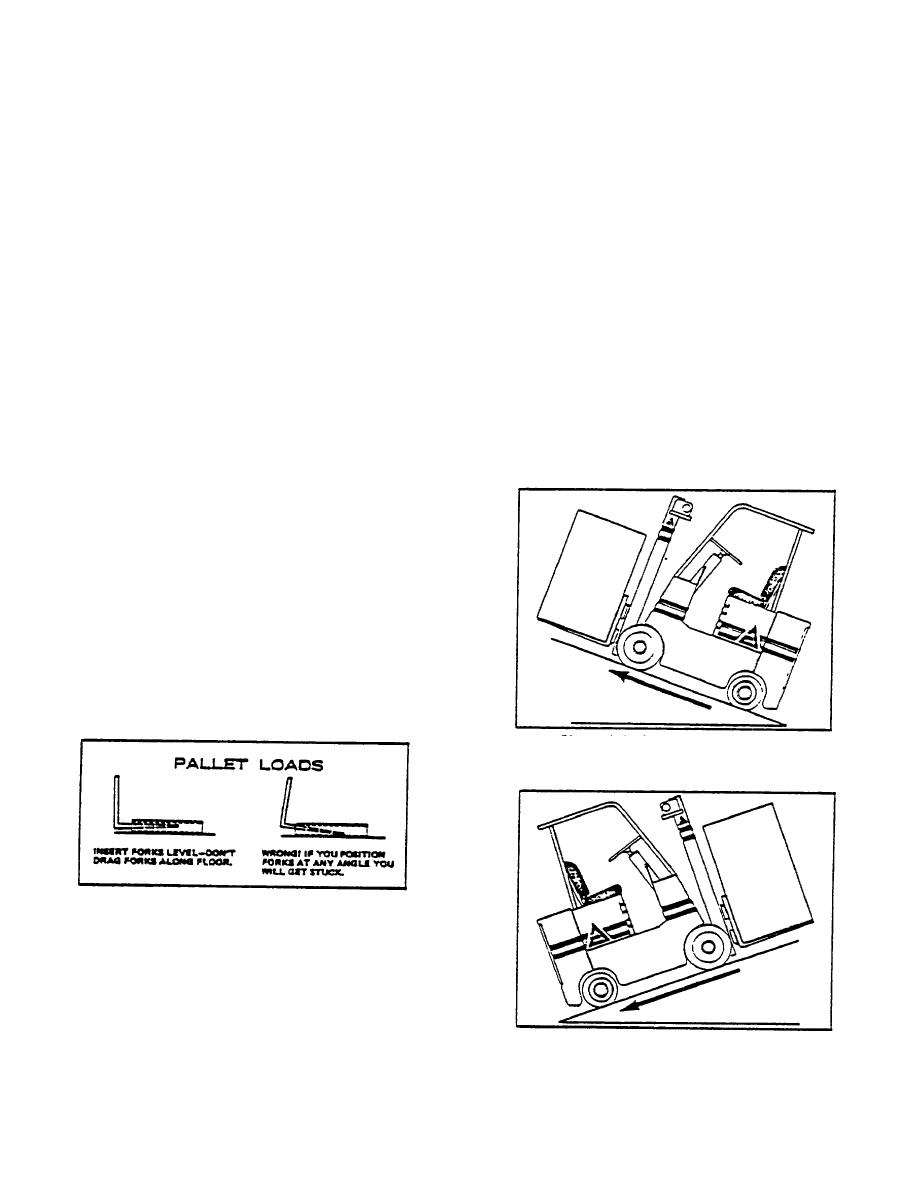 |
|||
|
|
|||
|
|
|||
| ||||||||||
|
|
 TM 10-3930-644-14&P
Stability of the truck is achieved by placing the load
CAUTION
close to the fulcrum (near the face of the forks). Each lift
If the load is so bulky that vision is
truck is rated for specific load capacity at a given lead
obstructed, drive in reverse. Extra
center, usually at 24-inches. When various attachments
care must be taken when driving in
or special masts are added, the load capacity and load
reverse because the operator does
center either increases or decreases, depending on the
not have a constant view of the load.
size and weight of the special mast or attachment. The
2. Traveling
load capacity of the lift truck should never be exceeded.
a. With heavy loads on the forks, steering is
Overloading the lift truck will: (1) be a hazard to the
easier because the weight on the steer
safety of others; (2) endanger other material; (3) damage
wheels is shifted forward.
the truck.
b. Obey all speed limit signs. If no speed
limits are posted, travel at the safest
The following procedures are suggested to aid in
speed that conditions allow.
operating your Allis-Chalmers lift truck. These are basic
procedures that can be adapted to most load handling
c. Always watch in the direction of intended
operations.
travel.
d. When ascending an incline, travel with
1. Lifting a Palletized Load
load leading (Fig 4-6).
a. Position the lift truck squarely in front of
e. Travel with the load trailing
when
the load (Fig 4-5).
descending an incline (Fig 4-7).
b. Raise forks to the proper level, half way
between the upper and lower members of
the pallet. Watch for low-hanging pipes or
electrical lines.
c. With the mast in a vertical position and the
forks parallel to the floor, slowly insert the
forks into the pallet until the load rests
against the fork faces. Unless the mast is
vertical, the forks may hang up when they
are inserted.
d. Lift the load Just enough to clear the stack
(or floor) beneath the load being removed.
Then tilt the mast back enough to safely
travel with the load.
Figure 4-6. Ascending an Incline
Figure 4-5. Palletized Load Handling
e. Back the truck slowly away from the stock
pile and when clear of all obstacles, lower
the load. The load should always be
carried as low as possible for maximum
stability and vision. Maximum back tilt
tends to cradle the load and prevent it
from sliding off the forks when stopping.
Figure 4-7. Descending an Incline
1-9
|
|
Privacy Statement - Press Release - Copyright Information. - Contact Us |